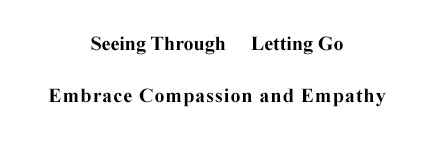This question was answered on Quora on April 19, 2024.
Among the many answers to the question, no answer has defined Buddhist meditation and the meaning of mindfulness. I want to start from there.
According to the Princeton Dictionary of Buddhism, in Astasahasrika-Prajnaparamita-Sutra (Chinese=道行般若波羅蜜經), Buddha defines enlightenment as the “thought of enlightenment is no thought since in its essential original nature thought is transparently luminous.”
So, in Buddhism, enlightenment is achieved when the mind has “no thought.”
What does that mean? Anyone who has looked at an encephalogram knows that an active mind manifests waves, while a person who passed away without thought shows a straight line. No, Buddha does not want you to die before you can get enlightened (some Buddhists actually believe that). However, he does want to have a quiescent mind before you can reach enlightenment.
With that definition explained, we can now discuss Buddha’s meditation, Samathavipasyana.
Samathavipasyana (Chinese=止觀), according to The Princeton Dictionary of Buddhism, is “In Sanskrit, “calmness (samatha) and insight (vipasyana), a term used to describe a meditative state that combines clarity and stability of samatha with the understanding of the nature of reality associated with vipasyana.” Furthermore, “The presence of vipasyana is the distinguishing feature of the wisdom that derives from meditation (Romanized Sanskrit=bhavanamayiprajna; Chinese=修慧).
So, how calm must calmness be to get enlightened? Buddha says it must be so “calm” as to have “no thought.” In other words, you must achieve an entirely still mind without thought to reach Buddhist enlightenment. That is why the Chinese translation of Samatha is to “stop (Chinese=止).
So, what happens at enlightenment when the mind is still?
Samadhi (Chinese=三昧), according to The Shambhala Dictionary of Buddhism and Zen, is “a non-dualistic state of consciousness in which the consciousness of the experiencing “subject” becomes one with the experienced “object” – thus is only experiential content. This state of consciousness is often referred to as “one-pointedness of mind;” this expression, however, is misleading because it calls up the image of “concentration” on one point on which the mind is “directed.” However, Samadhi is neither a straining concentration on one point nor is the mind directed from here (subject) to there (object), which would be a dualistic mode of experience.”
The consciousness of the “experiencing subject” obviously refers to the now quiescent mind of the enlightenment seeker. So, what is the consciousness of the “experienced object?” It is Citta, the pervasively present quiescent mind of the Cosmos, the Ultimate Reality Buddha teaches.
The discussion of Citta is way beyond the scope of this discussion. However, if you are interested, please visit Post 6 of my blog.
I do not have a definition for Mindfulness, but I can tell you what it is not from the definition of Samadhi mentioned above. Mindfulness is not what “is often referred to as “one-pointedness of mind;” this expression, however, is misleading because it calls up the image of “concentration” on one point on which the mind is “directed.” However, Samadhi is neither a straining concentration on one point nor is the mind directed from here (subject) to there (object), which would be a dualistic mode of experience.”
If you do visit my blog, you will understand that all Buddha’s teachings are verifiable, including the Ultimate Reality, which Buddha teaches in his doctrine known as “Such is the Way of Dharma (Chinese=法而如是).
Furthermore, you will learn where quantum mechanics intersects precisely with Buddhism, what Buddha teaches in the quantum realm (by another name in Buddhism,) and the critically important epistemology that Buddha teaches, without which Buddhism would be no more than another philosophy. Instead, it is the best teaching in the world about the realities in which all beings reside.

